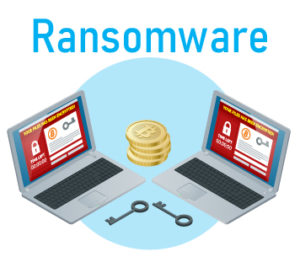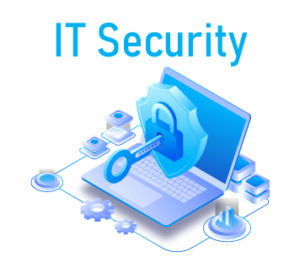What is SSL and why is it important for secure web browsing?
Lately, more and more often we hear rumors of numerous identity theft over the Internet, passwords leak, „insertion“ of the virus, and many of the laity is dotted with new concepts and words – such as ransomware.
All these security and security posts have at least one common name – the so-called social engineering, a situation in which you are literally deceived and „forced“ to click on the content or link that, at the very least, will not be good for you and your data. After clicking, a pandora’s box of tricks, viruses and worms that have only one goal – opens the door to theft by data theft.
However, contrary to the opinion, such mistakes can happen to everyone, and this is very easy. The website looks okay, even very similar to e-banking for your bank, but it’s natural to ask for a scam that is easy to spot in time – if you know what SSL is. We will show here what SSL is, which is a valid value and why everyone should use some version of it in everyday surfing, living and doing business on the today internet.
What is SSL?
SSL is an abbreviation of Secure Sockets Layer and represents a piece of code on your web server that provides secure online communication. When a browser connects to a secure site, the SSL certificate provides a crypted connection. It’s like when you seal the envelope before inserting it into the mailbox.
SSL certificates also cast confidence because each SSL certificate contains data for identification. When you send a request for the issuance of an SSL certificate, a third party verifies your organization’s information and issues you with a unique certificate that contains these data. This process is called authentication.

SSL has, over time, upgraded to SSL / TLS (Secure Sockets Layer / Transport Layer Security), but is still known by its original abbreviated SSL name. This certificate is also the basis for secure HTTP or HTTPS – which means that the site is virtually transported through a hypertext transfer protocol that passes through a secure, encrypted connection.
Let’s read some examples in order to understand better.
Let’s say you want to open an account at a bank. You come to the counter at the bank, ask the bank officer to help you, but she does not want you to open an account because you have not handed over any personal documents to her and simply, there is no basis for believing that you are. What to do next? One option is that an employee of the bank invites local institutions (the Police, for example) that they certainly have your personal information. But it is both a theory and a very hard and unnecessary option, which leads us to conclude that an official will first ask you to give her a valid personal document.
So, you give her an ID card containing your first and last name and personal information to verify your identity in this case. However, the document does not do anything other than your simple identification. You cannot, for example, with your ID or passport withdraw money from your ATM. But you can use any valid personal documents, use to open an account in the bank, based on which you will receive a debit card for ATMs.
A very similar scenario happens when you want to access a secure site. Upon arrival at the given web address, your client is provided with authentication and identification from the web server via SSL certificate. Your website can not just say „I am the National Bank of Germany“ – a valid certificate is required to confirm that identity. This is „SSL Handling“, which is actually a form of continuous two-way communication that aims to establish a connection and clear identification before the search engine actually requests the required information.
What is SSL certificate?
Certificates vary according to the level of security as well as the conditions under which they are issued. In the offer you can find certificates that cost several thousand dollars a year, and also free certificates, such as Comodo SSL.
To simplify and clarify, we can compare the SSL with a passport. Passport is a document that is a clear and secure proof of your identity and citizenship, and is used so that you can travel to other countries. Although, not all passports are the same, some are „more powerful“ than others. For example, someone needs a visa to go to a country, it needs to further verify their identity with other documents, and some do not.
The same way SSL certificates are different. There are certificates where the name of the company in the searcher is displayed next to the domain. This certificate is called an EV (Extended Validation) certificate, it provides a higher level of protection. Other certificates with a lower level of security generally have only a Secure tag, but the name of the certificate owner is not displayed.
Do not worry, not all sites need the highest level of security. If you run a blog, security in the form of an SSL certificate is desirable but not necessary. On the other hand, some of the more advanced SSL certificates are necessary if you have an online store or other site where users are asked to leave sensitive information, such as payment and credit card numbers, addresses, and so on.
Therefore, the SSL certificate cannot protect you from potential hazards such as social engineering attacks, spoofing attacks, and so on.
However, SSL is really the minimum security that ensures secure transactions and communication between the client and the server. Each website or application should have some kind of SSL certificate, and as users, you should be careful not to leave your data on unsecure sites.
Who needs SSL certificate?
Anyone who needs secure information transfer over the Internet. Use SSL to protect:
1. Online credit card transactions, web forms and login user data.
2. Email and webmail applications.
3. Corporate communications on the intranet, extranet, internal networks, file sharing and Microsoft SharePoint.
4. Communications on cloud platforms and virtualized applications.
What is encryption and why there are different levels?
Encryption is the mathematical process of coding and decoding information. The number of bits (40-bit, 56-bit, 128-bit, 256-bit) tells about the key size. As well as a longer password, the higher key has several possible combinations. Moreover, 128-bit encryption is one trillion times stronger than 40-bit encryption. When a crypted session is established, the strength is determined based on the capacity of the web browser, SSL certificate, web server, and operating system on the computer that accesses the site.

How does SSL make a site reliable?
The SSL certificate contains verified information about the site that protects, in order to convince users that the site they really are (that is, they are not on the phishing site). Extended validation is the highest standard of verification and in a striking way, assures users of the authenticity and security of the site: the browser’s address bar becomes green.
In addition to the address, the users of the site are also authentic and seal the trust mark, trust seal, which you receive with the certificate and which you can install on the site. When a user clicks on the stamp, he can see the information about the site owner, the independent body that issued the certificate, and the expiration date of the SSL certificate. In recent browsers, site information may appear when a user passes the mouse over the address bar. Also, the information can also be seen when clicking on the padlock icon in front of the address.







